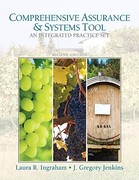I need help solving it and the steps needed to solve the problem.
IFRS 15-13 The financial statements of M&S are presented in Appendix E. The company's complete annual report, including the notes to the financial statements, is available online. Refer to M&S's financial statements and the accompanying notes to answer the following questions. What is the par or stated value of M&S's preference shares? (Do not leave any field blank. Enter 0 for the amounts.) M&S's Preference shares What is the par or stated value of M&S's ordinary shares? M&S's ordinary shares have a v value of p per share. What percentage of M&S's 3,200,000,000 authorized ordinary shares was issued at 25 March 2015? (Round answer to 1 decimal place, e.g. 52.5%.) Ordinary shares % What was the pound amount effect of the cash dividends on M&S's equity? ( Round answer to 1 decimal place, e.g. 52.5. Enter amounts in million.) The cash dividends caused Retained Earnings to by E millionWhat is M&S's return on ordinary share equity for 2015 and 2014? (Round answers to 1 decimal place, e.g. 52.5%.) 2015 2014 Rate of return % 1% What is M&S's payout ratio for 2015 and 2014? (Round answers to 1 decimal place, e.g. 52.5%.) 2015 2014 Payout ratio % Click if you would like to Show Work for this question: Open Show WorkAPPENDIX 15A DIVIDEND PREFERENCES AND BOOK VALUE PER SHARE DIVIDEND PREFERENCES LEARNING OBJECTIVE *5 Explain the different types of preferred stock dividends and their effect on book value per share. Illustrations 15A-1 to 15A-4 indicate the effects of various dividend preferences on dividend distributions to common and preferred stockholders. Assume that in 2017, Mason Company is to distribute $50,000 as cash dividends, its outstanding common stock has a par value of $400,000, and its 6 percent preferred stock has a par value of $100,000. Mason would distribute dividends to each class, employing the assumptions given, as follows. 1. If the preferred stock is noncumulative and nonparticipating: Preferred Common Total 6% of $100,000 $6,000 $ 6,000 The remainder to common $44,000 44,000 Totals $6,000 $44,000 $50,000 ILLUSTRATION 15A-1 Dividend Distribution, Noncumulative and Nonparticipating Preferred2. If the preferred stock is cumulative and nonparticipating, and Mason Company did not pay dividends on the preferred stock in the preceding two years: Preferred Common Total Dividends in arrears, 6% of $100,000 for 2 years $12,000 $12,000 Current year's dividend, 6% of $100,000 6,000 6,000 The remainder to common $32,000 32,000 Totals $18,000 $32,000 $50,000 ILLUSTRATION 15A-2 Dividend Distribution, Cumulative and Nonparticipating Preferred, with Dividends in Arrears 3. If the preferred stock is noncumulative and is fully participating:24 Preferred Common Total Current year's dividend, 6% $ 6,000 $24,000 $30,000 Participating dividend of 4% 4,000 16,000 20,000 Totals $10,000 $40,000 $50,000 The participating dividend was determined as follows.Current year's dividend: Preferred, 6% of $100,000 = $ 6,000 Common, 6% of $400,000 = 24,000 $ 30,000 Amount available for participation ($50,000 - $30,000) $ 20,000 Par value of stock that is to participate ($100,000 + $400,000) $500,000 Rate of participation ($20,000 + $500,000) 4% Participating dividend: Preferred, 4% of $100,000 $ 4,000 Common, 4% of $400,000 16,000 $ 20,000 ILLUSTRATION 15A-3 Dividend Distribution, Noncumulative and Fully Participating Preferred 4. If the preferred stock is cumulative and is fully participating, and Mason Company did not pay dividends on the preferred stock in the preceding two years: Preferred Common Total Dividends in arrears, 6% of $100,000 for 2 years $12,000 $12,000 Current year's dividend, 6% 6,000 $24,000 30,000Participating dividend, 1.6% ($6,000 + $500,000) in ,5 0 0 lg, A O 0 lo. 0 O O H __ so 01 o o a (I) p 1:. o o H 0| 9 G o 0 Totals |LLUSTRA110N 15A-4 Dividend Distribution, Cumulative and Fuliy Participating Preferred, with Dividends inArrears BOOK VALUE PER SHARE Book value per share in its simplest form is computed as net assets divided by outstanding common shares at the end of the year. The computation of book value per share becomes more complicated if a company has preferred stock in its capital structure. For example, if preferred dividends are in arrears, if the preferred stock is participating, or if preferred stock has a redemption or liquidating value higher than its carrying amount, the company must allocate retained earnings between the preferred and common stockholders in computing book value. To illustrate, assume that the following situation exists. Stockholders' equity Preferred Common Preferred stock, 5% $300,000 Common stock $400,000 Excess of issue price over par of common stock 37,500 Retained earnings , Totals $300,000 $600,082 Common shares outstanding 4,000 Book vaiue per share $150.02 ILLUSTRAON 15A-5 Computation of Book Value per ShareNo Dividends inArrears The situation in Illustration 15A75 assumes that no preferred dividends are in arrears and that the preferred is not participating. Now assume that the sarne facts exist except that the 5 percent preferred is cumulative, participating up to 8 percent, and that dividends for three years before the current year are in arrears. Illustration 15A76 shows how to compute the book value of the common stock, assuming that no action has yet been taken concerning dividends for the current year. Stockholders' equity Preferred Common Preferred stock, 5% $300,000 Common stock $400,000 Excess of issue price over par of common stock 37,500 Retained earnings: Dividends in arrears (3 years at 5% a year) 45,000 Current year requirement at 5% 15,000 20,000 Participatingadditional 3% 9,000 12,000 Remainder to common 61 ,m Totals $369,000 $531,082













